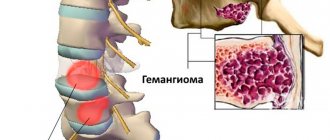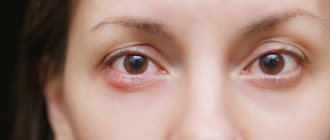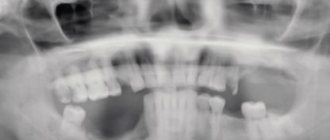- This is a swelling on the eyelid, usually having a white or yellow purulent head. From a medical point of view, barley is an acute purulent inflammation of the hair follicle of the eyelash or the mouth of the sebaceous gland.
Barley is a popular name, but when a doctor makes a diagnosis, he will write it as hordeolum .
There are external and internal barley. External stye
- This is a classic situation when the stye is on the outside of the eyelid.
Internal stye
is located on the mucous membrane of the eyelid; in this case, a lobe of the meibomian gland (the fatty gland of the cartilaginous plate of the eyelid) becomes inflamed.
Causes of stye on the eye
One of the main reasons for the appearance of stye on the eye of an adult is a bacterial infection - Staphylococcus aureus or Staphylococcus aureus. Normally, this bacterium lives on the skin and does not cause any harm to the body, but under the influence of a number of unfavorable factors, a suitable environment is created for its reproduction.
At the same time, inside the eyelid there are clusters of sebaceous and meibomian glands. The latter produce the oily part of tears, the purpose of which is to ensure the stability of the tear film and the smooth sliding of the eyelids over the surface of the eye. Disruption of these glands can lead to their inflammation and the formation of a small purulent pimple.
You can also identify a number of the most common factors that provoke stye on the eyelid:
- weakening of the immune system;
- diabetes;
- worms;
- diseases of the gastrointestinal tract;
- cold;
- hypothermia;
- neglect of hygiene rules;
- use of other people's cosmetics;
- stress.
Another possible causative agent of the inflammatory process is the parasite Demodex. This mite lives on the skin of 80% of the world's population. It is not dangerous for a healthy person, however, if there is a weakened immune system, endocrine disorders, gastrointestinal diseases, skin diseases, demodex can cause various inflammations, including the formation of barley.
Is it contagious to others?
This disease is not transmitted by airborne droplets. However, upon contact with a person who has an abscess, especially an external one, an infection can be acquired. Infection occurs due to the fact that fluid is formed at the site of inflammation, which is then released through the pores onto the surface of the skin, and along with it the infection comes out. It, in turn, can spread to a healthy person through clothing, household items, cosmetics, a handshake, etc.
Transmission of a dangerous pathogen can easily occur if a patient’s abscess ruptures. Its contents usually come out throughout the whole day, so it is very important all this time to carefully monitor the hygiene of not only your own hands, but also treat the site of inflammation with antiseptics in order to protect others and prevent the spread of infection.
Causes of itching
The appearance of inflammation of the sebaceous glands in the eyes is influenced by non-compliance with sanitary and hygienic standards, work in dusty, polluted production.
The causes of itching are:
- lack of vitamins;
- constant state of eye strain;
- decreased immunity;
- the presence of other diseases (diabetes mellitus, rosacea, inflammation of the lacrimal glands);
- improper use of decorative cosmetics or makeup remover.
Inflammation and itching are caused by Staphylococcus aureus. A small amount of histamine makes you want to scratch your eyes.
Hypothermia, stress, hepatitis contribute to the disease. Stye is not a contagious disease.
Symptoms and first signs
Sometimes the disease occurs in a mild form, without causing any discomfort, and manifests itself only by the formation of a small tubercle on the lower or upper eyelid. But most often, the symptoms of stye on the eye bring a lot of inconvenience in the form of pain, itching, swelling, headache and redness of the eyes.
It is best to start treatment before a pimple appears on the skin. At the beginning, a person notices slight swelling of the eyelid and redness. After a few hours, itching appears, which only intensifies over time. After about a day, you can feel a lump forming under the skin, resembling a boil or pimple.
Traditional methods of treatment
Barley is not a very serious disease, so if there are no complications, you can treat it at home using traditional medicine recipes.
Dry heating with river sand or salt
At the very beginning of the development of barley, when the purulent top has not yet appeared, you can warm the itchy area with heated dry river sand or salt placed in a cloth bag. You need to heat sand or salt to a temperature that is comfortable for the skin. Care must be taken that heating does not lead to burns. The bag is applied to the sore spot and held until it cools.
Calendula decoction
2 tablespoons of dried herb are poured with a glass of boiling water, left for 30-60 minutes, filtered. Apply the infusion in the form of compresses to the eyes, soaking cotton pads in it and applying them overnight, securing them with a bandage. Calendula has excellent anti-inflammatory properties, eliminating itching and skin irritation.
Healing lotions
For lotions, you can use any plant of your choice (aloe, eyebright, chamomile, plantain). All of them have antimicrobial and anti-inflammatory effects. An infusion is prepared at the rate of 2-3 tablespoons of plant material per glass of boiling water. Pour, leave for 30-60 minutes, cool, filter. Soak a gauze swab in the resulting medicinal infusion and apply it to the inflamed area several times a day for 10-15 minutes.
Classification
Depending on the number, ulcers can be multiple or single. Unlike single ones, multiple formations cause more intense symptoms and are accompanied by general malaise. This situation requires immediate consultation with an ophthalmologist.
If the disease appears for the first time, they speak of an acute course of the disease, but in the case when inflammation in the eyes appears with some frequency, barley is called recurrent.
According to localization, the abscess can be internal or external.
Interior
A small pimple appears on the side of the conjunctiva, caused by inflammation of the meibomian glands. In the first 2-3 days, a tubercle forms on the inner surface of the eyelid, accompanied by pain and itching. After 3-4 days it opens, and a small scar forms in this place.
Outer
Swelling occurs at the eyelash edge, and after a few days it fills with pus. Usually the barley opens after 3-4 days, the contents come out, the wound ceases to be painful and soon heals.
Stages of the disease
There are several stages in the development of the disease:
- Infiltration. A small bump appears on the inner or outer surface of the eyelid, which can easily be confused with a speck that has gotten into the eye. In this area, itching, redness, and slight swelling occur, which intensify over time.
- Suppuration. After some time, the swelling increases, fills with pus and causes serious discomfort when touched or blinked.
- Breakthrough of the abscess. In the normal course of the disease, after 3-4 days the abscess ripens and ruptures itself, the contents coming out to the surface of the skin. if this does not happen, the purulent capsule will have to be opened surgically in the doctor’s office.
- Healing. The affected area ceases to be painful, the wound heals, a crust forms, which falls off over the next few days, revealing healthy tissue.
What to do if there is an inflammatory process in the eye
Regardless of the cause that caused the inflammatory process in the eye, you should consult an ophthalmologist. A specialist will help identify the “culprit” of the disease and prescribe appropriate treatment. Self-medication in these cases is dangerous, because you cannot find out on your own whether a virus or bacteria caused the inflammatory process, a consequence of microtrauma or an allergic reaction. Drugs that help with a viral infection will not help cope with bacteria - and vice versa. But simply washing the eyes with water or a decoction of herbs will only give a temporary effect, the cause of the disease will not be eliminated and the process will only worsen, leading to an increasing spread of the disease.
Eye washes or lotions made from infusions of chamomile, calendula, and aloe juice can be used as a concomitant, but not the main treatment. To avoid inflammation of the eyes in cold weather, try not to overcool, do not stay in the wind and frost for a long time, do not overstrain your eyes when working at the computer and other gadgets, strengthen your immune system and treat colds in a timely manner.
Author: Svetlana Evseeva © Medical portal Zdorov-Info
Diagnosis and treatment
To quickly and effectively treat the disease, you should seek medical help as soon as possible. Before choosing the appropriate therapy, the ophthalmologist at the First Clinic Orekhovo will prescribe tests to determine the nature of the inflammation and the sensitivity of pathogenic bacteria to antibiotics. Based on the results of laboratory tests, a treatment plan is drawn up, which includes not only the use of antibacterial drugs, but also the external use of appropriate drops and gels.
Will it go away on its own?
In many cases, the abscess goes away on its own and does not require special treatment, but you should not neglect visiting a specialist. The doctor will give the necessary recommendations and ensure that the recovery process proceeds safely and quickly. However, it happens that over time the barley remains intact and the abscess does not open. Such inflammation on the eyelid can persist for more than one month and can often be eliminated only through surgery.
Is it permissible to walk with a swollen eye?
Whether you can go outside with a stye depends on your attitude towards your appearance with a swollen eye, as well as the degree to which you are concerned about the unpleasant symptoms. Everyone knows about the health benefits of fresh air, so in warm, windless weather, a walk will not harm the affected eye. To neutralize psychological discomfort, you can use tinted glasses to hide the swollen area.
During the cold season, it is better to avoid walking. Wind and frosty weather can cause an exacerbation of the inflammatory process with increased adverse manifestations. Walking in the cold is especially harmful for children suffering from barley due to the low resistance of the young body. Hypothermia is contraindicated for a patient of any age due to the high vulnerability of the inflamed organ of vision.
What not to do with barley
Under no circumstances try to squeeze out the abscess. Purulent contents can spread through the blood throughout the entire eye, which leads to blood poisoning, eyelid abscess and other extremely dangerous consequences.
If an abscess appears, it is also not recommended:
- rub and comb your eyes;
- perform any manipulations with dirty hands;
- apply cosmetics;
- use contact lenses;
- warm or cool the site of inflammation.
Complications
If you ignore the disease and do not start treatment on time, there is a high risk of developing the following complications:
- Conjunctivitis is the spread of pus throughout the eyeball and inflammation of the mucous membrane.
- Orbital phlegmon is a purulent inflammation of the orbital tissue of the eyeball. When purulent contents are released, the infection can spread to the deeper layers of the skin and eye tissue.
- Chalazion - stye degenerates into a round formation on the outer side of the eyelid. It is painless, but causes discomfort, as it puts pressure on the eyeball and reduces the quality of vision.
- Vascular plexus thrombosis is a circulatory disorder in the central vein or its branches due to blockage of blood vessels.
- Meningitis is inflammation of the brain due to the spread of infection.
- Sepsis is blood poisoning when purulent contents enter it.
Stye in a child
In children, due to the characteristics of the immune system and their lifestyle, this purulent disease occurs quite often. Inadequate treatment or untimely medical care can provoke eyelid abscess and other equally dangerous complications.
It is important to understand that in children under one year of age, the orbital tissue of the eyeball is especially fragile, so an ordinary stye can turn into an abscess even faster - within a few hours. Therefore, it is important to closely monitor the child’s health and, at the first suspicion of a disease, immediately contact a specialist.
Questions and answers
What causes stye on the eye?
The main cause of inflammation is infection of the sebaceous gland or hair follicle of the eyelash due to the active activity of staphylococci. This is facilitated by air pollution, a decrease in the protective properties of the immune system, and non-compliance with personal hygiene rules. Less commonly, stye appears on the eye due to difficult professional conditions or untreated infectious eye diseases.
How does stye appear?
The first signs of stye are discomfort of the eyelid, noticeable inflammation and swelling of the eyelash area, itching and a feeling of some heaviness. Within a few days, a yellow, purulent head of inflammation becomes noticeable on the surface of the skin. As it matures, it breaks through, after which a number of “inflammatory” symptoms of the disease go away, but a slight itching and an area of redness remain.
How to quickly remove stye from the eye?
Any methods of treating stye should be agreed upon with an ophthalmologist. The sooner you seek help, the faster you will be able to cope with the pathology. Antibacterial agents and topical ointments will help speed up the breakthrough of the purulent capsule. Attempts to quickly remove stye from the eye with compresses, heating or squeezing out pus are very dangerous and can cause serious inflammation of the mucous membrane and damage to the eyeball.
Disease prevention
To prevent the development of barley, the following recommendations should be followed:
- regularly clean the surface of the eyelids;
- strengthen the immune system;
- eat foods rich in vitamins and microelements;
- eliminate alcohol consumption and smoking;
- reduce the number of stressful situations;
- establish a sleep schedule;
- Visit your ophthalmologist regularly for preventative eye examinations.
The ophthalmologist at our medical clinic has extensive experience in treating inflammatory eye diseases and will do everything necessary to effectively and quickly cope with the pathology once and for all. You can make an appointment by phone or by leaving a request on the website.











